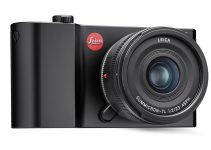After years of countless rumors and speculations, arguably the most highly anticipated mirrorless camera on the market is finally here! As promised earlier, Sony has just officially introduced the Sony A7S III bringing a ton of excitement among indie filmmakers and aspiring videographers across the globe.
Almost five years after the predecessor A7S II hit the market, Sony has finally launched the long-awaited A7S III boasting an improved BSI (back-illuminated) 12-megapixel sensor that records UHD 4K 10-bit 4:2:2 video at 120fps as well as Full HD up to whopping 240fps.
At the heart of the new A7S III is a 12-megapixel full-frame sensor that has been significantly improved compared to the A7S II. Sony is now opting for construction with back exposure (BSI), allowing more light to be captured resulting in a much better performance in highly dimmed conditions.
The maximum sensitivity of the A7S III is still ISO 409.600 (expandable down to up to ISO 40). The sensor is supported by the new BIONZ-XR processor, which according to Sony, has eight times more computing power than the previous image processor.
Furthermore, the brand new A7S III sensor enables a full-pixel readout without pixel binning and without crop up to 4K/60p. In this mode, the recording limit should be one hour without any overheating. As a reference, the EOS R5 should last about 30 minutes when recording at 4K/60p.
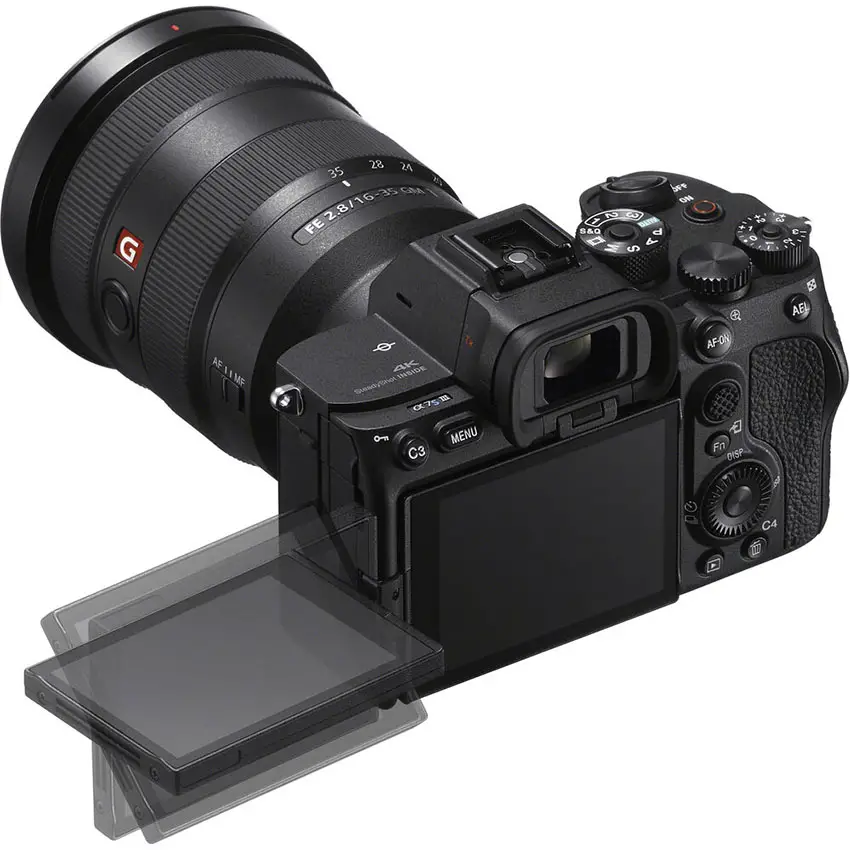
For the first time in the Alpha 7 series, there’s a fully articulating LCD screen included (3.0 inches, 1.44 million points) which also offers touchscreen functionality for further convenience while operating.
The rear screen can be swiveled, and the handle and controls have become larger, as with other cameras of the third Alpha generation. The structure of the menus has also been overhauled for more intuitive navigation.
Billed as the world’s highest resolution EVF, the brand new OLED viewfinder on the A7S III, on the other hand, achieves a record resolution of 9.44 million points and a magnification of 0.9x.
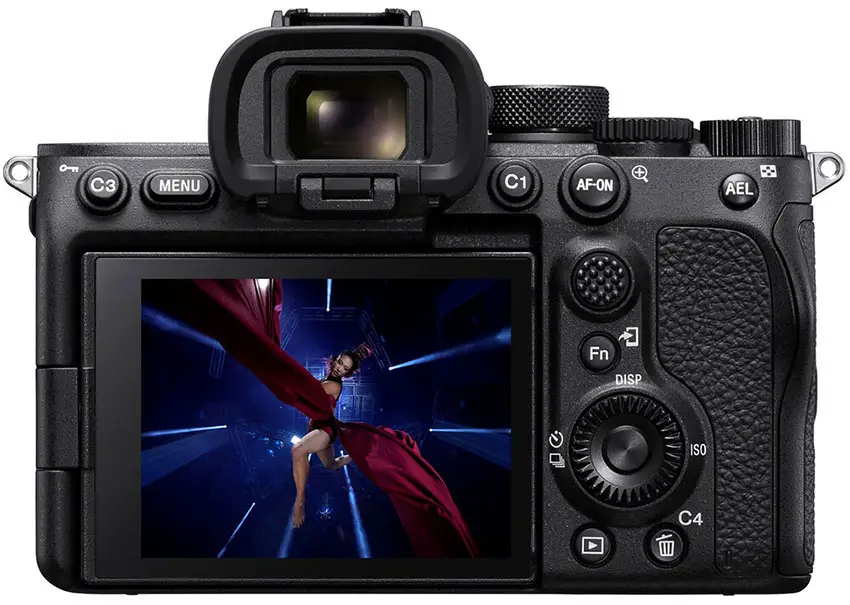
Other than that, Sony A7S III brings some new codecs to opt for – XAVC HS, which uses HEVC/H.265 encoding to retain more detail at smaller bitrates, and XAVC S-I, which is an intraframe codec for consistent performance and quality at bitrates up to 600 Mb/s.
Of course, there are also logarithmic gamma profiles available (S-Log 2/3) as well as HLG (Hybrid Log-Gamma), which maximize the camera’s dynamic range to over 15 f-stops.
If that isn’t enough, with the inclusion of HDMI 2.1 on board, the camera can output 4K/60p as 16-bit Raw to an external recorder. It also comes equipped with USB 3.2 Gen 1 Type-C port, USB 3.2 Gen 1 Type-C port, 3.5mm microphone and external microphone ports as well as Multi-Interface Shoe.
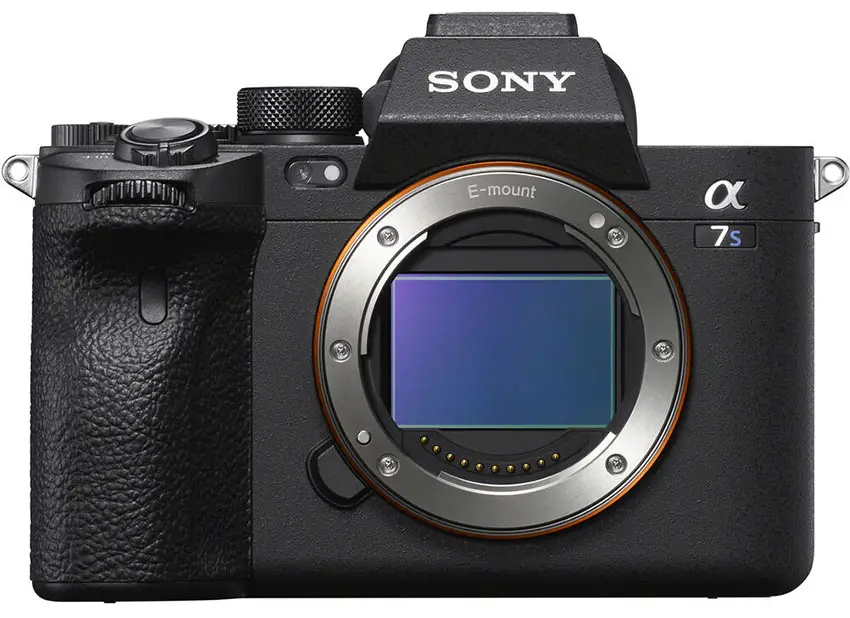
According to Sony, the rolling shutter artifacts have also been significantly minimized on the Sony A7S III. The all-new camera is equipped with a 5-axis image stabilizer which achieves effectiveness of 5.5 f-stops. All 5 axes of stabilization will function at all times, even when used with third-party lenses and adapters or lenses with built-in optical stabilization.
Additionally, specifically for video, there is also an Active IS mode that adds electronic stabilization for even smoother footage straight out of the camera.
The hybrid autofocus of the A7S III covers 92% of the image sensor and uses 759 phase-detection points and 425 with contrast AF. In addition to human, the AF algorithms now also recognize animal eyes at a greater distance than before. The AF sensitivity goes down to -6 EV series, the camera shoots at up to 10 frames per sec. The mechanical shutter is designed for 1/8000 s.
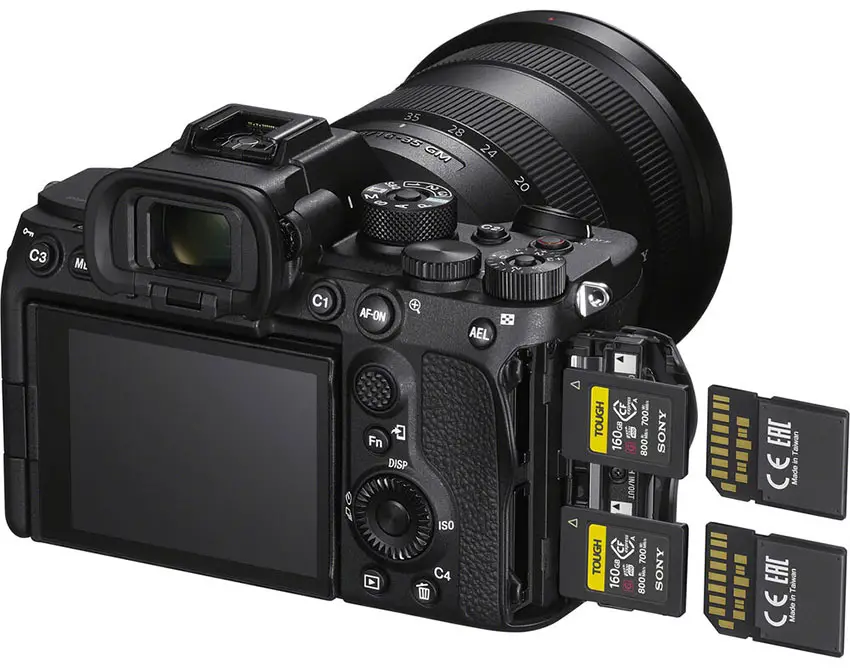
Sony is using two memory card slots in the A7S III for the first time, which can accomodate both SD cards (UHS-II) and the new CFexpress type A cards. For most video modes, SD cards of video classes V60 and V90 are sufficient. CFexpress is only required in S&Q mode with 4:2:2 color subsampling and 10-bit color depth.
Sony plans to launch two CFexpress Type A cards on the market in September with write speeds of 700 MB/s and read speeds of 800 MB/s respectively.
Last but not least, the Sony A7S III accepts the high-capacity NP-FZ100 rechargeable lithium-ion battery, which provides approximately 510 shots/80 minutes of recording per charge when using the viewfinder or 600 shots/95 minutes of recording per charge when using the rear LCD.
Sony A7S III Highlights
- 12MP Full-Frame Exmor R BSI CMOS Sensor
- BIONZ XR Image Processor
- UHD 4K 120p Video, 10-bit 4:2:2 Internal
- 16-Bit Raw Output, HLG, S-Log 2, and S-Log3 Gammas
- 759-Point Fast Hybrid AF
- Base ISO 160 for S-LOG3
- Max ISO 409600 (video)
- 16bit RAW output
- 15 stops of dynamic range
- 5-Axis SteadyShot INSIDE Image Stabilization
- World’s highest resolution new 9.44 million dot EVF (QXGA resolution)
- same Sony A7rIV AF system
- No overheating, no recording time limits
- UHS-II card and CFexpress Type A card support
- Fully articulating screen like the one used by the Sony ZV-1.
- The video record button is now on the top of the camera, placed behind the shutter button
- Both 3.5mm microphone and external microphone ports facilitate greater control over audio recording.
- Shipment is expected in mid-August 2020
The brand new Sony A7S III is already available to pre-order selling for $3,498 with expected shipping starting in mid-August.
[source: Sony]
B&H Pre-Order Link:
Sony a7S III Mirrorless Camera (B&H)
Disclaimer: As an Amazon Associate partner and participant in B&H and Adorama Affiliate programmes, we earn a small comission from each purchase made through the affiliate links listed above at no additional cost to you.


